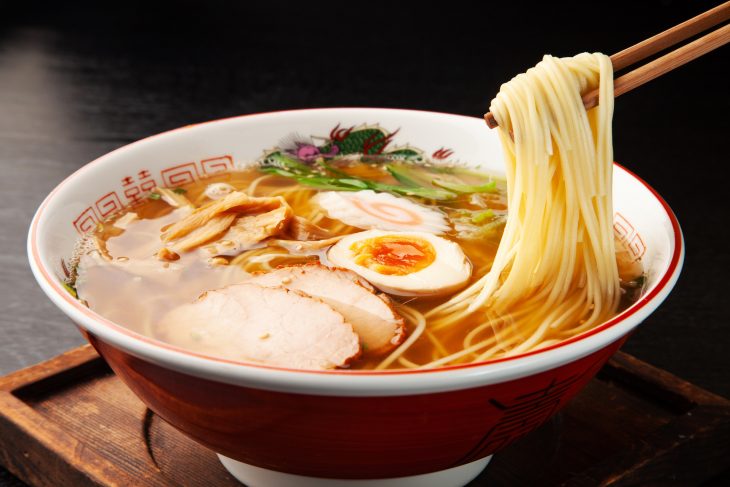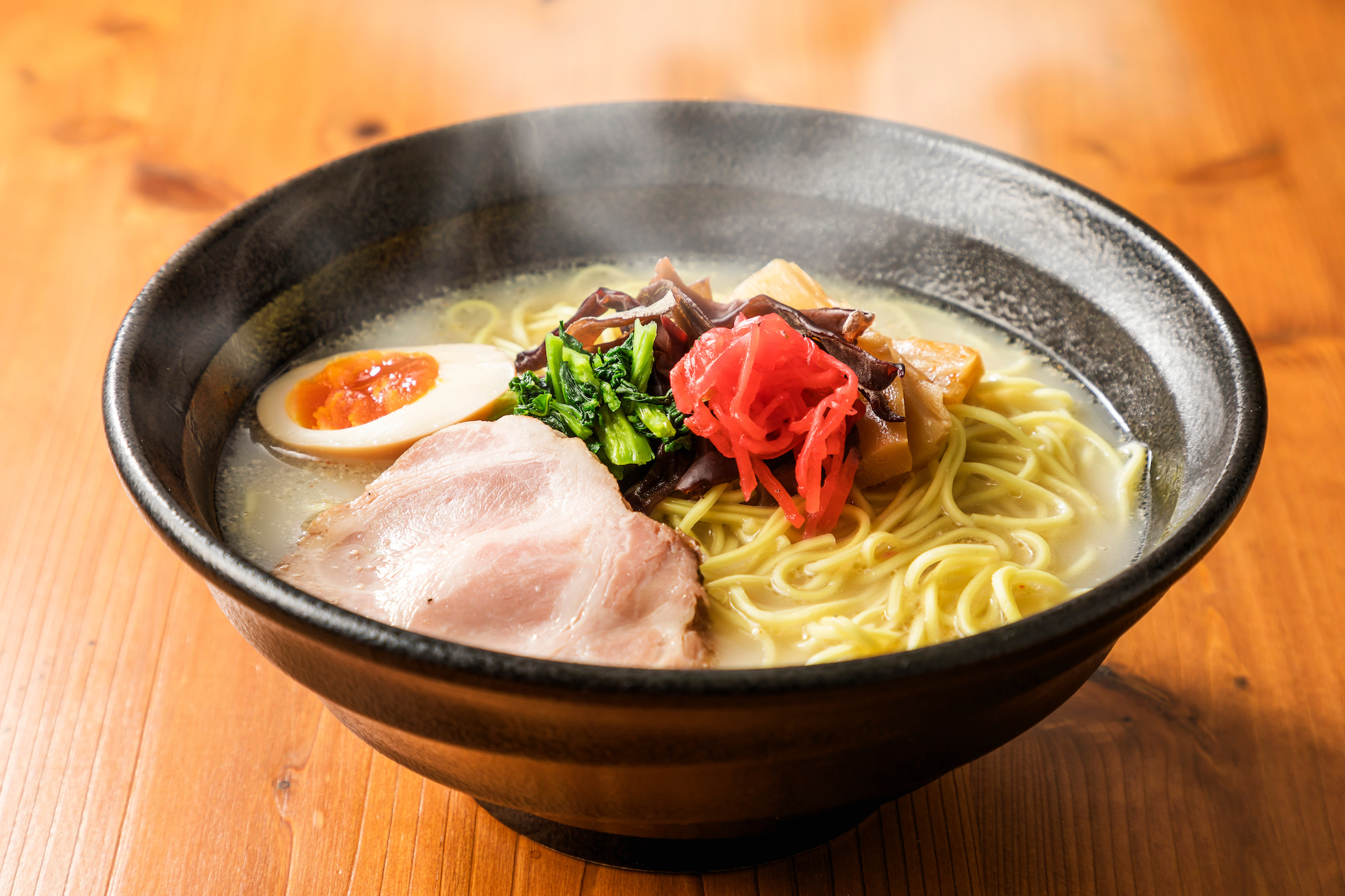
Ramen, a delightful bowl of noodles immersed in a savory broth, has captured the hearts and taste buds of people worldwide. Originating in Japan, this culinary masterpiece has undergone a remarkable evolution, blending tradition with innovation. In this article, we uncover 18 fascinating facts about ramen, delving into its history, ingredients, and cultural significance.
The Origins of Ramen
Ramen’s roots trace back to China, where it was known as “la-mian” or “pulled noodles.” In the early 20th century, Japanese noodle vendors embraced this dish and adapted it to suit local tastes, giving birth to what we now know as ramen.
Noodles for Every Preference
Ramen noodles come in various shapes and sizes. From thin and delicate to thick and chewy, each style creates a unique texture that complements different broth types.
The Secret of the Broth
A key element of ramen lies in its flavorful broth. It can be made from chicken, pork, beef, seafood, or even vegetarian ingredients. The broth’s complexity and depth of flavor often result from hours of simmering bones, vegetables, and aromatic spices.
The Ramen Trifecta
A classic ramen bowl consists of three essential components: noodles, broth, and toppings. The harmonious combination of these elements determines the overall taste experience.
Regional Ramen Specialties
Japan boasts a diverse range of regional ramen styles, each with its distinct characteristics. Some renowned variations include Sapporo (miso-based), Tokyo (soy sauce-based), Hakata (tonkotsu-based), and Kitakata (shoyu-based) ramen.
Instant Ramen Revolution
In 1958, Momofuku Ando introduced instant ramen, forever changing the culinary landscape. With its easy preparation and long shelf life, instant ramen gained immense popularity globally, becoming a staple in many households.
The World’s First Ramen Museum
Yokohama, Japan, is home to the Shin-Yokohama Ramen Museum, dedicated to showcasing the rich history and diverse flavors of ramen. Visitors can explore various ramen shops, learn about its evolution, and even create their own custom noodles.
Ramen’s Rising Popularity
Ramen has transcended cultural boundaries and become an international sensation. Its popularity has led to the emergence of countless ramen-centric restaurants worldwide, where chefs and enthusiasts continually innovate with flavors and techniques.

Ramen’s Health Benefits
Contrary to popular belief, ramen can offer nutritional benefits. The broth provides essential minerals and amino acids, while the noodles offer a source of carbohydrates. Balanced with fresh vegetables and protein, ramen can be part of a well-rounded diet.
The Art of Ramen Toppings
Ramen is often adorned with an array of mouthwatering toppings. From chashu (braised pork) and soft-boiled eggs to seaweed, bamboo shoots, and green onions, these additions elevate the flavors and textures of the dish.
Ramen in Pop Culture
Ramen has left an indelible mark on pop culture. It has been featured in numerous films, manga, and anime, cementing its status as a symbol of comfort, nostalgia, and culinary excellence.
Competitive Ramen Eating
In Japan, ramen eating competitions gather contestants who battle it out to consume colossal amounts of ramen in record time. These events showcase the incredible speed and voracious appetites of participants.
The Ramen Rating System
Diners and ramen enthusiasts use a rating system called the “ramen scale” to evaluate and compare different ramen shops. Factors such as broth richness, noodle texture, and overall experience contribute to the rating.
Ramen as a Hangover Cure
Ramen is renowned as a go-to remedy for hangovers in Japan. The combination of nourishing broth, hydrating noodles, and comforting toppings helps revitalize the body and restore balance.
Unique Ramen Variations
Chefs around the world have embraced ramen as a canvas for their creativity. Unique variations include cheese ramen, chocolate ramen, and even vegan ramen, offering a delightful twist on the classic dish.
Ramen-Related Festivals
In Japan, ramen festivals attract crowds of food enthusiasts eager to sample a wide range of ramen styles from different regions. These vibrant events celebrate the diversity of flavors and the craftsmanship of ramen chefs.

Ramen Etiquette
In Japan, slurping your noodles is not only acceptable but encouraged. Slurping is believed to enhance the flavors and show appreciation for the chef’s efforts.
Ramen’s Global Impact
Ramen’s influence has extended far beyond Japan. It has become a symbol of cross-cultural exchange, representing the fusion of culinary traditions and captivating people of all backgrounds.
Conclusion
Ramen, with its rich history, enticing flavors, and universal appeal, continues to enthrall food enthusiasts worldwide. As this iconic dish evolves, its significance as a cultural phenomenon remains unshakable. As you dive into the world of ramen, let your taste buds guide you through its incredible array of flavors and textures. Whether you savor a traditional bowl or explore modern variations, the allure of ramen is certain to leave a lasting impression.
Frequently Asked Questions (FAQs)
Is ramen gluten-free?
While traditional ramen noodles are made from wheat flour and are not gluten-free, some restaurants and stores offer gluten-free alternatives made from ingredients like rice or buckwheat.
Can vegetarians and vegans enjoy ramen?
Absolutely! Many ramen establishments now offer vegetarian and vegan options. These bowls typically feature vegetable-based broths and substitute animal proteins with tofu or plant-based alternatives.
How do you eat ramen properly?
To enjoy ramen to the fullest, use chopsticks to pick up the noodles, bring them to your mouth, and slurp them. Sip the broth between noodle bites and savor the harmonious flavors of the toppings.
What are the healthiest ramen choices?
Opt for ramen bowls with lighter broths like miso or shoyu (soy sauce) instead of rich, fatty tonkotsu. Add extra vegetables and lean protein to make it a more nutritious meal.
Can I make ramen at home?
Yes! Making ramen at home can be a fun and rewarding experience. Many recipes and tutorials are available online, guiding you through the process of preparing homemade ramen broth and assembling your own delectable bowl.
Was this page helpful?
Our commitment to delivering trustworthy and engaging content is at the heart of what we do. Each fact on our site is contributed by real users like you, bringing a wealth of diverse insights and information. To ensure the highest standards of accuracy and reliability, our dedicated editors meticulously review each submission. This process guarantees that the facts we share are not only fascinating but also credible. Trust in our commitment to quality and authenticity as you explore and learn with us.
